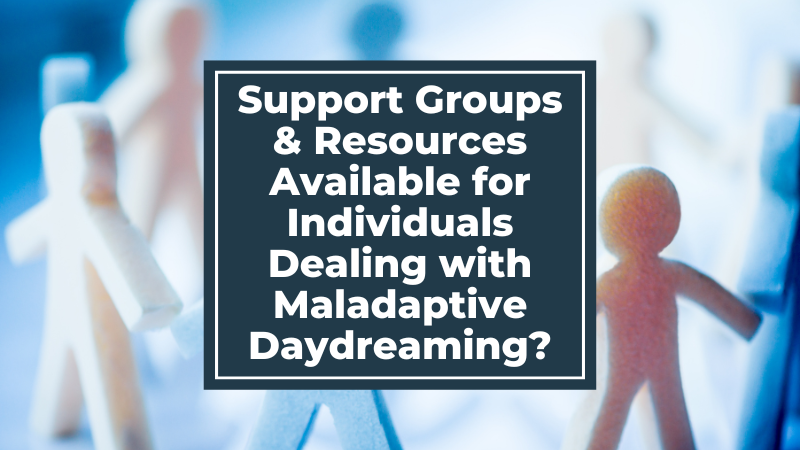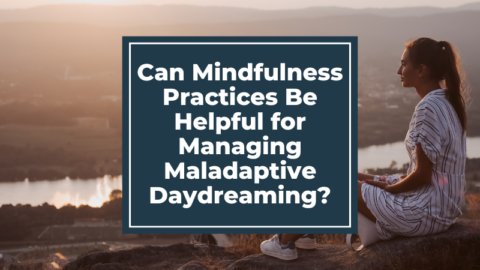Yes, there are support groups and resources available for individuals dealing with maladaptive daydreaming. Recognizing the importance of a supportive community, several online platforms and organizations have been established to provide a space for individuals to connect, share experiences, and find support. These resources offer a range of valuable information, guidance, and opportunities for individuals to connect with others who may be going through similar experiences.
When looking for more resources to help you on your maladaptive daydreaming journey, consider some of these options and resources.
Support Groups and Resources for Maladaptive Daydreaming
- Online Forums and Communities: Various online forums and communities, like this one, dedicated to maladaptive daydreaming exist where individuals can engage in discussions, share their stories, and seek support. These platforms often provide a safe and understanding space to connect with others who understand the unique challenges associated with maladaptive daydreaming. Although, they are not run by professionals and therefore should not be seen as an exchange for seeking treatment from professionals.
- Therapy and Counseling: Seeking professional help through therapy or counseling can be beneficial for individuals struggling with maladaptive daydreaming. Mental health professionals, such as therapists or counselors, can provide guidance, coping strategies, and support tailored to the specific needs of each individual. Some therapeutic techniques, such as cognitive-behavioral therapy (CBT) or mindfulness-based interventions, can be beneficial for managing maladaptive daydreaming. Working with a therapist or counselor trained in these approaches can provide tailored support and strategies to address maladaptive daydreaming patterns. There are several different types of professionals capable of helping you address your mental health needs and maladaptive daydreaming tendencies.
- Online Therapy Platforms: Online therapy platforms offer convenient access to licensed therapists who can provide guidance and support for maladaptive daydreaming. These platforms often offer flexible scheduling and a range of communication options, such as messaging, video calls, or phone sessions.
- Online Resources and Websites: Numerous websites and online resources provide valuable information and support for individuals with maladaptive daydreaming. These resources often offer educational materials, self-help tools, coping strategies, and personal stories that can aid in understanding and managing maladaptive daydreaming.
- Online Support Groups: Online support groups specifically focused on maladaptive daydreaming provide a platform for individuals to connect with others who share similar experiences. These groups offer a supportive environment where participants can discuss challenges, share strategies, and provide mutual encouragement.
- Books and Publications: Several books and publications explore maladaptive daydreaming, its impact, and strategies for coping. These resources can provide valuable insights, practical techniques, and personal narratives that resonate with individuals experiencing maladaptive daydreaming.
- Social Media Communities: Social media platforms, such as Facebook groups or Instagram communities, often host communities centered around maladaptive daydreaming. These platforms allow individuals to connect, share insights, and access resources in a more interactive and real-time manner.
- Self-Help Groups: Self-help groups, whether in-person or online, provide a space for individuals to connect with others who are also navigating maladaptive daydreaming. These groups often follow a structured format and provide a supportive environment for sharing experiences, discussing coping strategies, and offering mutual support.
- Professional Coaching: Some individuals may benefit from working with a professional coach who specializes in maladaptive daydreaming. Coaches can offer personalized guidance, accountability, and tools to help individuals manage their daydreaming patterns and work toward their goals.
- Peer Support: Engaging with peers who have similar experiences with maladaptive daydreaming can be a valuable source of support. Online communities, social media groups, or local meetups can connect individuals with others who understand and can offer empathy and encouragement.
- Journaling or Creative Expression: Engaging in journaling or creative expression, such as writing, drawing, or painting, can be a helpful outlet for processing emotions and exploring the underlying triggers and themes of maladaptive daydreaming. This self-reflective practice can provide insights and contribute to personal growth.
- Mindfulness and Meditation: Practicing mindfulness and meditation techniques can help individuals cultivate present-moment awareness and reduce excessive daydreaming. Mindfulness exercises can help individuals become more grounded and focused, allowing them to redirect their attention from daydreaming to the present moment.
- Supportive Friends and Family: Trusted friends and family members can offer valuable support and understanding. Sharing your experiences with loved ones can help foster open communication and provide a supportive network for coping with maladaptive daydreaming.
- Self-Education: Educating yourself about maladaptive daydreaming through books, articles, podcasts, or documentaries can deepen your understanding of the condition and provide insights into management strategies. Learning about the experiences of others and the latest research can empower you to make informed decisions about your own well-being.
- Holistic Approaches: Exploring holistic approaches such as yoga, exercise, relaxation techniques, or alternative therapies (e.g., acupuncture, aromatherapy) can complement traditional treatment methods and contribute to overall well-being. These practices can help reduce stress, promote relaxation, and enhance self-awareness.
- Online Courses or Workshops: Some organizations or professionals offer online courses or workshops specifically designed to help individuals manage maladaptive daydreaming. These resources may provide structured guidance, practical exercises, and tools to support individuals in their journey of understanding and addressing maladaptive daydreaming.
- Research Studies and Clinical Trials: Participating in research studies or clinical trials can provide an opportunity to contribute to the understanding of maladaptive daydreaming and explore potential treatment options. These studies may offer access to specialized interventions or therapies that are not widely available.
- Local Support Groups: In some areas, local support groups focused on mental health or general well-being may also be available. These groups offer an opportunity to connect with others face-to-face, share experiences, and exchange coping strategies.
While these support options can be helpful, the level of support and guidance needed may vary for each individual. Some may find solace in online communities, while others may require the assistance of a mental health professional. It’s essential to listen to your own needs and seek support that aligns with your situation.
Professional guidance is often crucial for a comprehensive understanding and management of maladaptive daydreaming. Consider consulting with a mental health professional who can provide personalized support and help individuals develop effective coping mechanisms to address the challenges they may face.
Reaching out for support is a proactive step toward managing maladaptive daydreaming and finding a sense of connection with others who can relate to your experiences. It’s essential to find a support option that aligns with your needs and preferences. Remember that each person’s experience with maladaptive daydreaming is unique, and what works for one individual may not work for another. Finding the right support and resources may involve some exploration and experimentation.
Lastly, it’s important to prioritize self-care, engage in healthy coping mechanisms, and reach out for professional help when needed. With the right support and strategies, individuals can develop effective techniques to manage maladaptive daydreaming and enhance their overall well-being.
Finding the right support can be a transformative step toward understanding and managing maladaptive daydreaming, promoting personal growth, and enhancing overall well-being.
We invite you to join the Maladaptive Daydreaming Forum today to start connecting with other maladaptive daydreamers.









